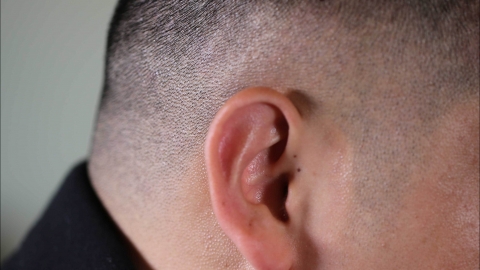What causes lumps behind the ear?
Generally, lumps appearing behind the ears may be caused by temporary lymph node hyperplasia, inadequate skin cleansing, acne, folliculitis, lymphadenitis, and other reasons. Symptomatic treatments such as general care and medication may be needed. If discomfort occurs, it is recommended to seek medical advice promptly and undergo appropriate treatment under a doctor's guidance. Detailed explanations are as follows:

1. Temporary Lymph Node Hyperplasia
During childhood, the lymphatic system and lymphoid organs develop actively. Lymph nodes in the neck, including those behind the ears, may experience temporary and physiological hyperplasia. This condition typically requires no special treatment and can resolve spontaneously.
2. Inadequate Skin Cleansing
Inadequate skin cleansing can lead to blocked hair follicles, preventing normal sebum drainage and causing sebum accumulation within the follicles, which may be accompanied by symptoms such as pain and itching. It is recommended to maintain cleanliness of the skin behind the ears, using warm water and mild soap for washing, and avoiding cleansers or shampoos containing strong chemical ingredients.
3. Acne
Acne occurs due to overactive sebaceous glands, leading to blockage of hair follicles and sebaceous gland openings, followed by bacterial infection and the formation of inflammatory lesions. It may be accompanied by localized redness, swelling, pain, and sometimes pus discharge. It is recommended to use medications such as erythromycin ointment, fusidic acid cream, and tretinoin cream under medical supervision.
4. Folliculitis
The skin behind the ears contains numerous hair follicles. When these follicles become infected with bacteria, red, painful lumps may develop, sometimes accompanied by local redness, swelling, pain, and pus discharge. It is recommended to use medications such as mupirocin ointment, fusidic acid cream, and compound polymyxin B ointment as directed by a physician to alleviate symptoms.
5. Lymphadenitis
Lymph nodes are part of the body's immune system. When the body experiences infection, lymph nodes swell to respond to the threat. Bacterial or viral infections causing lymphadenitis can lead to swollen lymph nodes behind the ears, forming lumps, which may be accompanied by symptoms such as local redness, swelling, pain, and fever. It is recommended to use medications such as roxithromycin tablets, amoxicillin capsules, and cephalexin dry suspension under medical guidance to relieve symptoms.
It is recommended to keep the skin behind the ears clean and dry in daily life, washing daily with warm water to avoid irritation caused by sweat and dirt accumulation.






